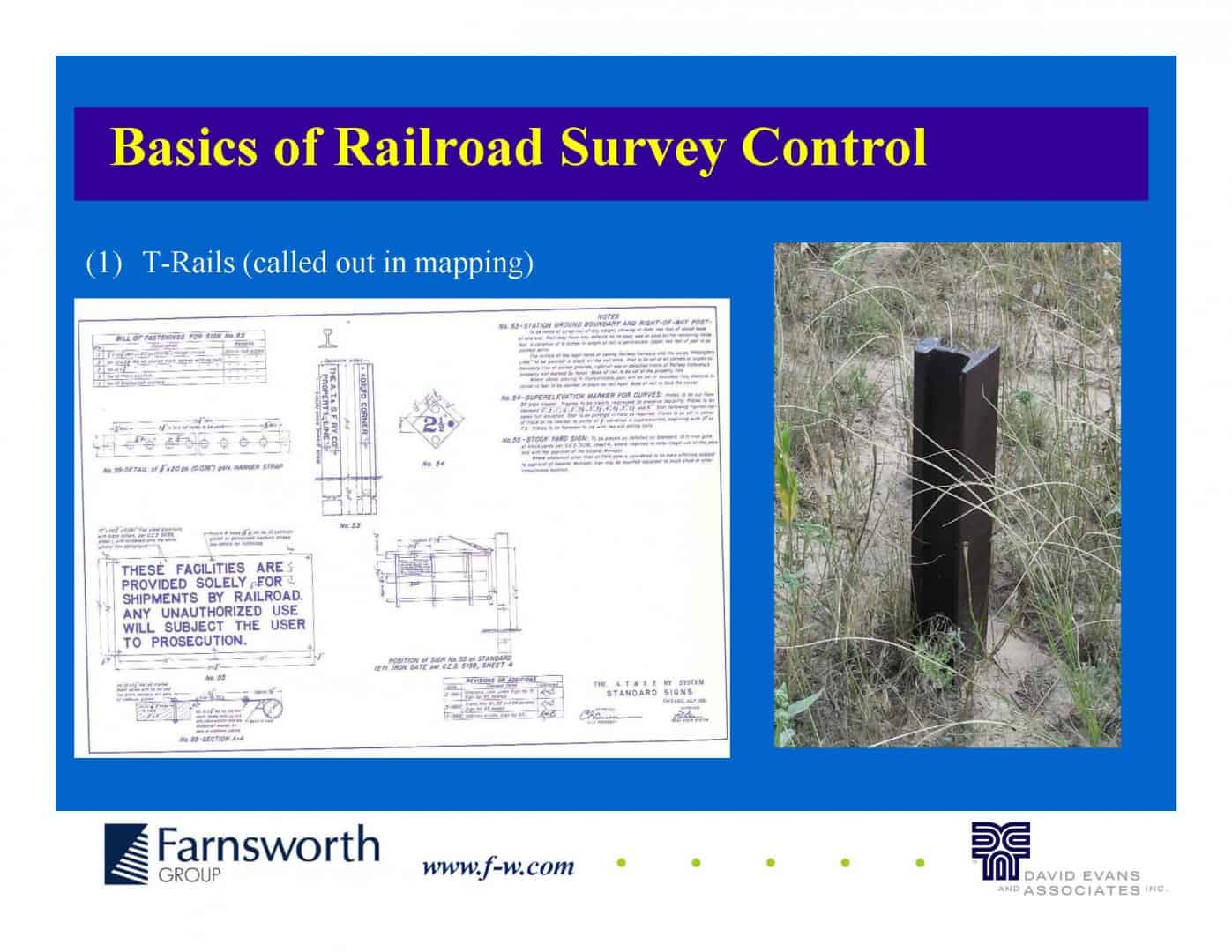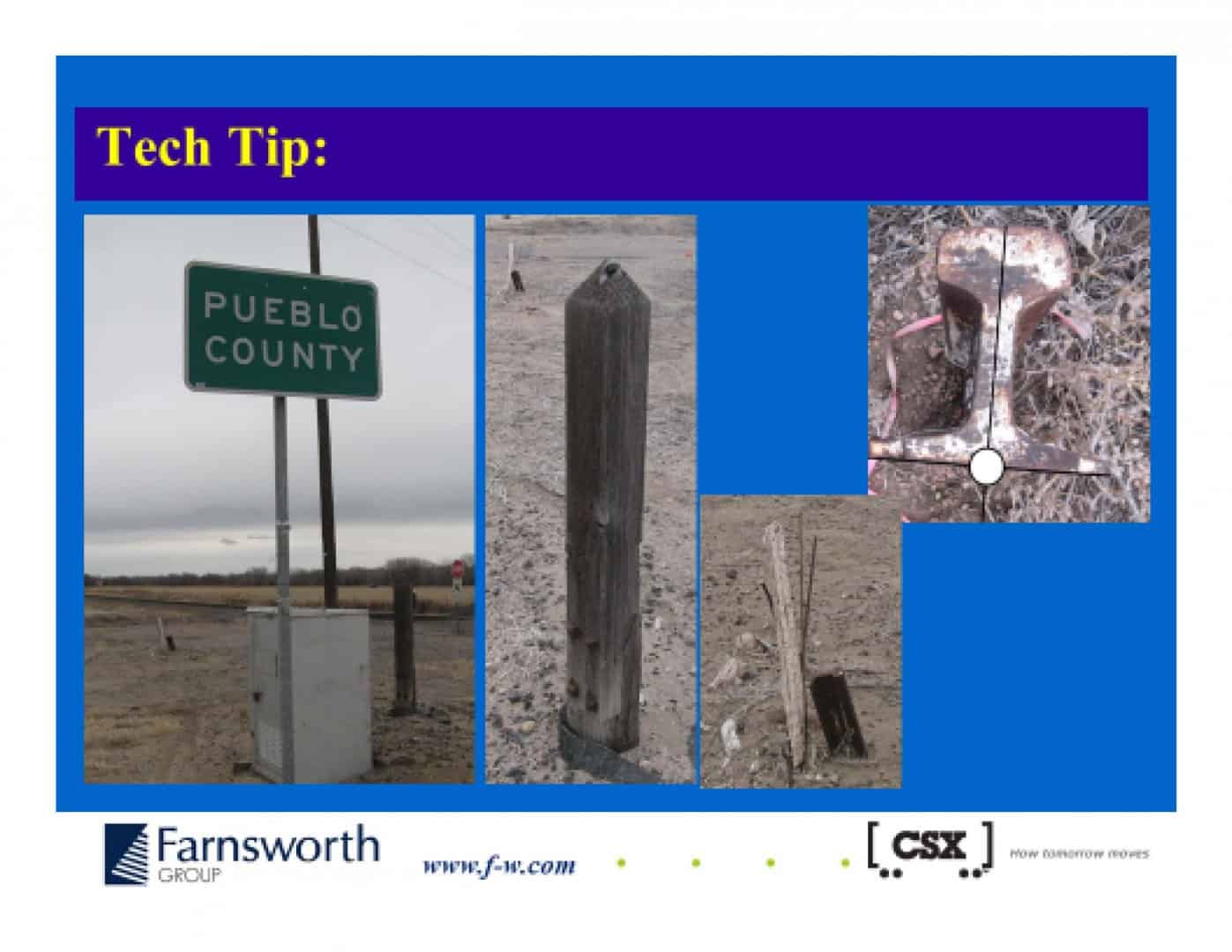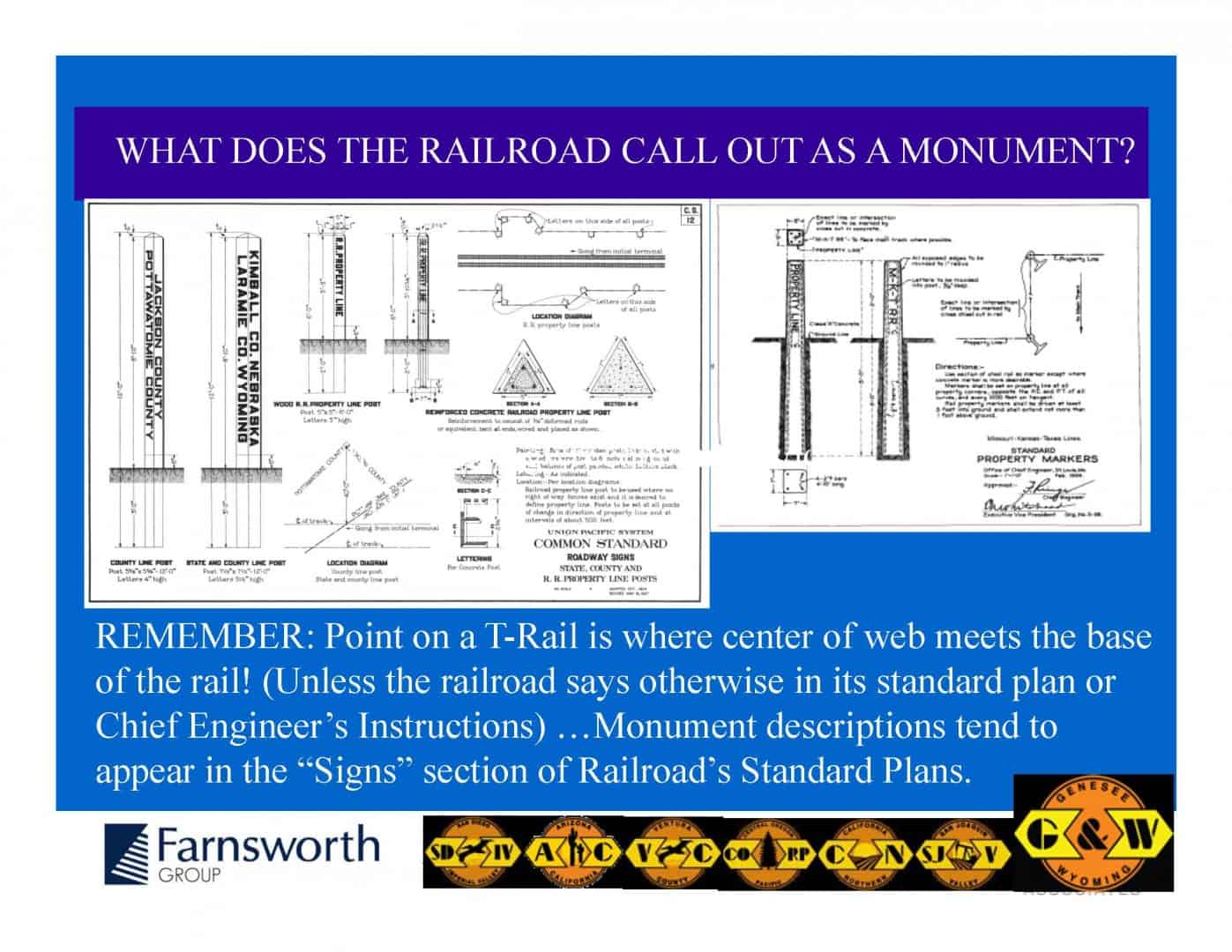So I have a railroad rail buried standing on it's end, so that about 3 ft are still sticking up. I was wondering where the standard practice would be for where the actual corner falls within it. the whole thing is about 1.15' from end to end, so this obviously can make a big difference for rotation. What do you all hold for the corner on it?
Center by center (intersection of the two axes) is what I have always shot when I've founnd those.
do you think they set it with that order of precision? Shoot the center of the rail and put an ink mark where you shot if you need to set on it again (if you must). Don't punch it (in my opinion)
Agree with Dan Patterson. Unless it is leaning. Then it's a best guess as to where center/center was when it was vertical.
Design to 27 decimal places. Document to 2 decimal places. Set something huge that can lean over time.
It has a huge amount of lean, but fortunately it's leaning from the face of the rail, so I should be able to get a good center/center.
We used a lath and put it on the inside of the rails, just above the attachment points and then found the center of that. shot that center point. But, on an active railroad we've shot both rails and calc'd a centerline and used that as an offset. either way works.
That's better than nothing. But, as you know, center lines move, especially if there is any curve whatsoever. In this case, I would probably go with the set rail instead of the tracks. We have also found many of these used in small towns where the railroad purchased lots/blocks from the town company for depots and other expansions from the basic ribbon of right-of-way.
If it's leaning a lot like that I might take two shots to measure the top and bottom (where it enters the ground). Photos help if you're not the one in the field, but fortunately I don't have to worry about that. Then I see how it works with everything else and just make a decision that way.
Was taught to shoot at the intersection of the bead and the shank. 😉
When you find one leaning, it is probably leaning from top to bottom and the location at the bottom of the rail probably needs to be found. The usually do not bend.
I am not getting the 1.15' from end to end. I have never seen rail a foot high. What am I missing?
sorry, the 1.15 is including the lean, really it's a 6" rail I suspect.
The centerline of the rails has little if anything to do with the railway corridor boundary.
A prior thread on this topic seemed to indicate the rails were often haphazardly placed, making them accurate but not precise markers. When they were carefully placed with the base of the rail facing away from the track, the center of the base line was often used as the point, i.e. the rail was entirely within the ROW.
We had Charlie Tucker come do a RR Surveying seminar in CA this summer and here are a few slides from his presentation about the RR Right of Way monuments. You will see in the third image below at the upper right, the rail monuments should be located at the base at center and the entire RR is inside the Right of Way.
This reminds me of the 0.04' discussion.
I attended a similar seminar in NY. You posted this before I could find it. Center of rail at the bottom.
Ken
The only rail ends I've found for monuments were at corners of Headright Surveys.
Rail ends like DOT 4x4 concrete monuments were set by the wishes of the PC in charge on any particular day.
I've simply been happy that they were found and located and never fought over the difference if tied on one lip or the other lip.
My fix is to tie in as many as can be found and to arrive at a best fit solution.
mattyoclock, post: 343892, member: 10773 wrote: So I have a railroad rail buried standing on it's end, so that about 3 ft are still sticking up. I was wondering where the standard practice would be for where the actual corner falls within it. the whole thing is about 1.15' from end to end, so this obviously can make a big difference for rotation. What do you all hold for the corner on it?
Two of the posted pictures from the Farnsworth Group give where the point in Question should be. One is a picture depicting the point and the next picture has a statement under the diagram as to the location of the point.
It would help if they were all set with that orientation. I've seen them all four different possibilities.
Similar seminar in Oregon last year. The entire rail is within the right of way and the base of the rail is on the right of way line. If it hasn't been whacked, that is.







